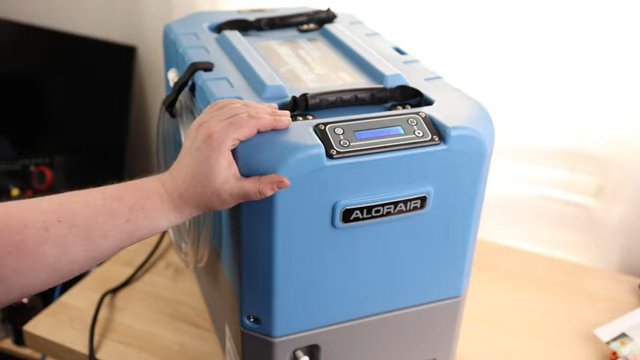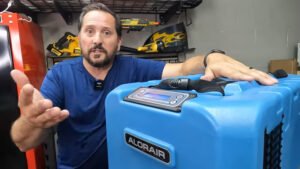Industrial environments often contend with elevated humidity levels that can compromise product integrity, equipment longevity, and personnel comfort. Effective industrial moisture control represents a cornerstone of operational resilience, particularly in sectors such as food and beverage storage, pharmaceuticals, electronics manufacturing, and warehousing. Relative humidity (RH) above 60 percent fosters mold proliferation, corrosion of metal components, and packaging deterioration, all of which can translate into substantial financial losses. “Analysts who study post-mortems on failed launches often conclude that moisture-related defects carry a fully loaded cost three to five times higher than the unit’s factory value,” according to a recent industry assessment on moisture damage economics (Multisorb). Deploying tailored warehouse dehumidifier solutions and robust humidity management systems can therefore yield both direct savings in product preservation and indirect gains through reduced energy consumption and equipment maintenance.
Dehumidifier Architectures for Commercial Applications

Commercial dehumidification employs several core technologies, each suited to distinct scales and environmental conditions:
- Refrigeration-based units leverage vapor-compression cycles to condense moisture; these high-capacity dehumidifiers typically extract between 50 and 200 liters of water per day in industrial settings.
- Desiccant systems use hygroscopic materials (e.g., silica gel) to adsorb moisture, often integrated into large-scale dehumidifiers for low-temperature or sub-zero environments where coil icing is a concern.
- Heat recovery ventilation (ERV/HRV) may operate alongside primary dehumidifiers to balance fresh-air requirements with moisture removal; an ERV system can maintain 40–50 percent RH while contributing to overall HVAC efficiency (Wikipedia).
Selecting between portable and ducted units, or modular arrays and centralized humidity management systems, hinges on factors such as airflow requirements, ambient temperature range, and integration with existing commercial climate control infrastructure.
Catalog of Operational Failures and Diagnostic Pathways
Even professionally engineered installations can encounter malfunctions. The most frequent issues and remedial actions are described below.
1. Electrical and Power Anomalies
Symptom: Unit fails to start.
Diagnosis: Verify main panel switch status, inspect circuit breakers or fuses, and confirm humidistat settings (ideally between 45 – 55 percent RH for commercial applications). If no power fault is evident but the compressor remains inactive, consult an HVAC technician for relay or compressor analysis (Dehumidifier Corporation of America).
2. Capacity Mismatch and Underperformance
Symptom: Humidity remains above set point despite continuous operation.
Diagnosis: An undersized dehumidifier cannot match factory or warehouse volume. Cross-reference the dehumidifier’s rated moisture removal efficiency (MRE) in liters/day with actual ambient conditions; adjust by deploying additional units or upgrading to high-capacity dehumidifiers designed for large footprints (dehumidifier.ae).
3. Airflow Restrictions and Filtration Deficits
Symptom: Diminished moisture extraction rate, increased energy draw.
Diagnosis: Clogged intake filters and coated evaporator coils impede air passage. Routine cleaning or replacement of air filters every 1–3 months is advised. Confirm unobstructed clearances around inlet and outlet grills; restricted airflow often correlates with frost formation and reduced commercial moisture removal performance.
4. Coil Icing in Low-Temperature Environments
Symptom: Ice accumulation on evaporator coils, extended defrost cycles.
Diagnosis: Operating below the minimum ambient temperature threshold (commonly 8 °C) precipitates ice formation. Solutions include equipping units with automatic defrost features, deploying desiccant-based dehumidifiers for sub-10 °C conditions, or integrating pre-heated inlet air via heat recovery ventilation (dehumidifier.ae) and (moisturecurecommercial.com.au).
5. Drainage Failures and Water Leaks
Symptom: Water pooling beneath the unit or irregular drip patterns.
Diagnosis: Inspect drain hoses for kinks, blockages, or loose fittings. For gravity-drain systems, confirm that the outlet terminates below the unit’s base; for pumped drains, validate pump operation by monitoring discharge pulses during a high-humidity cycle.
6. Sensor Drift and Humidistat Errors
Symptom: Unit cycles erratically or never reaches shutoff threshold.
Diagnosis: Humidistats and external hygrometers should be cross-calibrated quarterly. Replacement of aging sensors may be necessary when field tests reveal deviations exceeding ±5 percent RH (dehumidifier.ae).
7. Acoustic Disturbances
Symptom: Excessive vibration or unusual noise levels.
Diagnosis: Level the unit on a firm, even surface. Tighten loose fasteners on fan assemblies and replace damaged blades. For permanent installations, consider vibration-damping mounts or pads to mitigate structural transmission.
Quantifying the Impact of Uncontrolled Humidity
Data from multiple industries underscore the stakes of neglecting dehumidification:
- Warehouses experiencing nighttime RH spikes from 30 percent to 70–80 percent report accelerated mold and mildew outbreaks, leading to product spoilage and safety hazards (AKCP).
- Electronics manufacturers attribute up to 5 percent of field returns to corrosion induced by excessive moisture, with secondary costs that include emergency logistics and warranty claim administration (Multisorb).
- Food storage facilities face FDA findings that more than 20 percent of product losses derive from suboptimal storage conditions, often humidity-related, contributing to both financial and sustainability burdens (buske.com).
Such data-driven evidence emphasizes that investment in commercial dehumidification yields tangible returns: lower insurance premiums, reduced spoilage, and enhanced workplace health.
Methodologies for Humidity Regulation and System Optimization
Maintaining target RH levels in factories and large warehouses requires a layered strategy:
-
Preventive Maintenance Regimen
- Schedule filter and coil inspections monthly during peak humidity seasons.
- Log performance metrics such as inlet/outlet dew point delta and cycle run times to detect drift.
-
Integration with HVAC Controls
- Utilize building automation systems (BAS) to coordinate dehumidifier activation with ventilation rates, minimizing redundant conditioning.
- Employ demand-controlled ventilation to adjust outdoor-air intake based on real-time humidity readings, reducing load on both dehumidifier and air-handling units (ENERGY STAR).
-
Zoning and Load Balancing
- Segment large spaces into discrete humidity control zones. Deploy professional dehumidification solutions scaled to each zone’s moisture load.
-
Supplementary Airflow Management
- Ensure adequate circulation around stored goods; stagnant pockets exacerbate local RH excursions.
-
Seasonal Adjustments
- Recalibrate set points for monsoon or winter seasons when ambient dew points shift significantly.
Criteria for Equipment Procurement
Commercial stakeholders should apply a structured procurement framework when evaluating dehumidifier options:
- Capacity and Efficiency: Compare moisture removal rates (liters/day) against measured factory or warehouse cubic meters. Reference MRE values under representative inlet conditions.
- Ambient Range Compatibility: Confirm unit ratings for minimum and maximum operating temperatures to prevent coil icing or system overstrain.
- Energy Consumption: Evaluate EER (energy efficiency ratio) and projected kWh usage in your electricity tariff context.
- Integration Capability: Look for BACnet or Modbus support to integrate with existing BAS for unified commercial climate control.
- Serviceability and Support: Verify local availability of OEM parts, warranty terms, and technician networks.
These dehumidifier buying tips facilitate informed decisions, ensuring that initial capital outlay aligns with long-term operational objectives.
Preventive Best Practices and Modern Innovations
Regular inspections of building envelope integrity—sealing gaps in doors, windows, and roof penetrations—complement mechanical dehumidification. Advanced humidity management systems now incorporate predictive analytics, using machine learning to forecast moisture loads and trigger preemptive defrost or staging protocols. Emerging desiccant wheel technologies promise up to 20 percent greater latent-load efficiency in facilities operating year-round.
Through a combination of precise equipment selection, disciplined maintenance, and data-driven control strategies, industrial operators can mitigate humidity risks effectively. Adopting high-capacity dehumidifiers and large-scale dehumidifier arrays tailored to site-specific requirements ensures that factories and warehouses maintain optimal environmental conditions, preserving asset value and personnel well-being.
By systematically addressing the catalog of dehumidifier failures described above and following best-practice guidelines for equipment procurement and system design, businesses can achieve reliable commercial moisture removal that underpins productivity and regulatory compliance.



